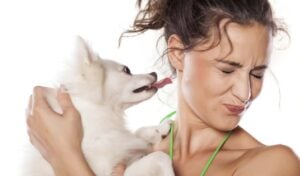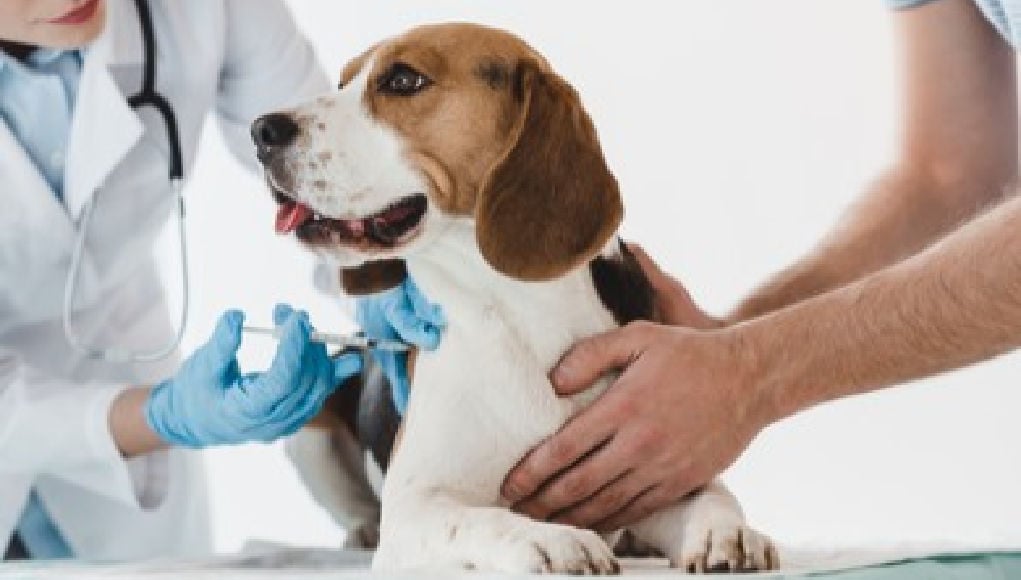
Table of Contents
- 20 Most-Asked Questions of Dog Owners
- Why does my dog eat grass?
- How long is a dog’s pregnancy?
- Why does my dog lick me (or others)?
- Why does my dog shake or tremble?
- What fruits or foods are safe for dogs to eat?
- How often should I trim my dog’s nails?
- How long do dogs live?
- Why do dogs scoot their bottoms?
- Why does my dog howl or vocalize so much?
- What is the best diet for my dog?
- Do I need to vaccinate my dog?
- How much exercise does my dog need?
- How do I prevent or treat separation anxiety in dogs?
- How do I potty train or housebreak a puppy?
- What are the signs of illness, or when should I see a vet?
- How do I groom my dog (Coat Care, Brushing, Shedding)?
- How can I teach basic obedience commands (sit, stay, recall)?
- What breed is right for my lifestyle or environment?
- How do I socialize my dog or puppy properly?
- Should I get pet insurance, and how does it work?
- Most-Asked Questions From Dog Owners: Before You Go…
We're in the last quarter of 2025, and we thought it's best to round up all the popular and most-asked questions from dog owners that we have received over the past couple of months.
If you also constantly ask these questions yourself, make sure to bookmark this article for future reference!
20 Most-Asked Questions of Dog Owners
Why does my dog eat grass?
Grass-eating is a common behavior in dogs and usually not a cause for concern.
Some experts believe dogs eat grass to help induce vomiting if they feel unwell, though not all dogs vomit afterward. It's also possible they enjoy the texture or taste.
In many cases, grass-eating is a form of boredom or attention-seeking behavior.
While occasional grass-eating is generally harmless, make sure the grass hasn't been treated with pesticides, fertilizers, or weed killers, which can be toxic.
If your dog is eating large amounts of grass frequently or vomiting often, consult your veterinarian.
RELATED: Why Do Dogs Eat Grass?
How long is a dog’s pregnancy?
A dog’s pregnancy typically lasts between 58 and 68 days, with the average being around 63 days (about 9 weeks).
The length can vary slightly depending on the breed, size of the litter, and when ovulation occurred.
During this time, the dog’s nutritional needs and physical activity should be monitored closely, especially as she nears labor.
RELATED:
- How Long Are Dogs Pregnant? A Guide to Dog Pregnancy Length
- Dog Pregnancy 101: The Guide on Pregnant Dogs
Why does my dog lick me (or others)?
 Dogs lick people for many reasons, including affection, communication, and sensory exploration.
Dogs lick people for many reasons, including affection, communication, and sensory exploration.
Licking can be a sign of bonding, similar to how puppies lick their mother and siblings. It can also be their way to taste or smell something on your skin, such as sweat, lotion, or food particles.
However, excessive licking may be a sign of stress, anxiety, or even an underlying medical issue, so consulting your vet is important!
RELATED:
Why does my dog shake or tremble?
Dogs may shake or tremble for a variety of reasons, ranging from excitement to fear or medical conditions.
It’s common for small breeds like Chihuahuas to tremble when they’re excited or nervous. Some dogs shake after waking up, stretching, or even during play.
Shaking due to fear or anxiety is usually triggered by loud noises (like fireworks or thunder), new environments, or separation from their owner. In these cases, it's important to provide reassurance and a safe space.
Medical causes include nausea, pain, poisoning, or underlying conditions like neurological disorders.
If shaking is frequent, paired with other symptoms (vomiting, limping, lethargy), or seems abnormal for your dog, it’s best to consult your vet immediately.
RELATED: Seizures and Your Dog: Understanding the Different Types of Canine Seizures
What fruits or foods are safe for dogs to eat?
Many fruits and veggies are safe and even beneficial for dogs.
Some dog-friendly fruits include apples (no seeds), blueberries, bananas, watermelon (no seeds/rind), and strawberries. These are rich in vitamins, fiber, and antioxidants.
Vegetables like carrots, green beans, cucumbers, and pumpkin are also great snacks when served raw or steamed with no seasoning or additives.
Avoid toxic foods such as grapes, raisins, onions, garlic, avocados, chocolate, and anything with xylitol.
Always introduce new foods slowly and in moderation. When in doubt, consult your vet before offering human food to your dog.
RELATED: 16 Healthy Human Foods for Dogs
How often should I trim my dog’s nails?
Most dogs need their nails trimmed every 3 to 4 weeks, but this can vary depending on how active they are and the type of surface they walk on.
Dogs that regularly walk on hard pavement may naturally wear down their nails, requiring less frequent trimming.
If you hear your dog’s nails clicking on the floor, it's usually a sign they’re too long. Overgrown nails can cause discomfort and are also more likely to snag or break.
RELATED: How To Trim Your Dog's Nails
How long do dogs live?
The average lifespan of a dog is about 10 to 13 years, but this varies greatly depending on breed, size, genetics, and overall health.
Small dogs tend to live longer than large dogs, sometimes reaching 15–18 years, while giant breeds may only live 6–10 years.
Mixed-breed dogs often have longer lifespans due to greater genetic diversity, while purebred dogs may be more prone to breed-specific health conditions.
RELATED: How Long Do Dogs Live? Explaining the Life Expectancy of Dogs
Why do dogs scoot their bottoms?
 Scooting typically means your dog is trying to relieve irritation, itching, or discomfort near the anal area.
Scooting typically means your dog is trying to relieve irritation, itching, or discomfort near the anal area.
The most common cause is impacted or infected anal glands, which may need to be manually expressed by a groomer or vet.
Other causes can include worms, allergies, or irritation from grooming products or food.
If your dog is also licking the area excessively or seems uncomfortable when sitting, it’s worth investigating further.
RELATED: Dog Scooting: Why is My Dog Dragging Its Butt and How to Stop It
Why does my dog howl or vocalize so much?
Howling is a natural canine behavior and a form of communication.
Some breeds, like Huskies, Beagles, and Malamutes, are more vocal by nature and may howl to express excitement, alertness, or loneliness.
Dogs may also howl in response to triggers like sirens, loud music, or certain tones.
In other cases, frequent howling could be a sign of separation anxiety or boredom, especially if it happens when you're away from home.
RELATED: 7 Tips on Why Do Dogs Howl and How To Get Them to Stop
What is the best diet for my dog?
The best diet for your dog depends on their age, breed, activity level, and any specific health conditions.
Some pet owners opt for raw, fresh, or homemade diets, but these require careful planning to ensure all nutrients are included.
Always ensure your dog gets the right balance of protein, fat, fiber, vitamins, and minerals.
If you're considering these options, consult a vet or pet nutritionist to avoid deficiencies.
RELATED: Dog Nutrition 101: What Do Dogs Eat
Do I need to vaccinate my dog?
Yes, vaccinations are essential for protecting your dog from dangerous and potentially deadly diseases. Not only that, but it also helps prevent the spread of illness in the community.
Core vaccines, such as those for rabies, parvovirus, distemper, and adenovirus, are typically required by law or strongly recommended by veterinarians.
Apart from that, there are non-core vaccines that may be advised based on your dog’s lifestyle or location. These include vaccines for leptospirosis, Bordetella (kennel cough), Lyme disease, and canine influenza.
RELATED:
How much exercise does my dog need?
The amount of exercise a dog needs depends on its breed, age, and health condition.
High-energy breeds like Border Collies, Huskies, and Labs may need 1–2 hours of vigorous activity per day, while smaller or older dogs may do well with 30 minutes of moderate activity.
Lack of exercise can lead to obesity, anxiety, and destructive behaviors. On the flip side, over-exercising young puppies or senior dogs can lead to joint problems.
It’s important to tailor activities to your dog’s needs and slowly build up their stamina.
RELATED: How Much Exercise Should My Dog Get?
How do I prevent or treat separation anxiety in dogs?
 For dogs already experiencing separation anxiety, training techniques like counter-conditioning and desensitization work well.
For dogs already experiencing separation anxiety, training techniques like counter-conditioning and desensitization work well.
In severe cases, you may need help from a certified behaviorist or a vet who can prescribe anxiety medication or recommend calming supplements.
To prevent it, build independence gradually. Start with short departures and return calmly.
Use puzzle feeders or treat toys to create positive associations with your absence. Crate training and a consistent daily routine can also reduce anxiety.
RELATED: How To Deal With Puppy Separation Anxiety
How do I potty train or housebreak a puppy?
Potty training starts with consistency, patience, and supervision.
Take your puppy out first thing in the morning, after meals, naps, and play sessions, or every 1–2 hours for young puppies.
Reward them with praise or a treat every time they go potty outside.
Avoid punishment for indoor accidents, as this can create confusion and fear. Instead, clean accidents thoroughly with an enzymatic cleaner and reinforce desired behavior.
RELATED: 20 Puppy Potty Training Hacks
What are the signs of illness, or when should I see a vet?
Common signs of illness in dogs include loss of appetite, vomiting, diarrhea, coughing, sneezing, lethargy, excessive thirst or urination, and behavioral changes.
If your dog exhibits any of these symptoms for more than 24 hours, contact your vet.
More urgent symptoms include difficulty breathing, seizures, bloated abdomen, pale gums, sudden collapse, or inability to urinate. These require immediate veterinary attention and may indicate life-threatening conditions.
RELATED: 25 Dog Health Symptoms That You Must Address Right Away
How do I groom my dog (Coat Care, Brushing, Shedding)?
Grooming needs vary based on your dog’s breed and coat type.
Short-haired dogs like Beagles may only need occasional brushing, while long-haired breeds like Golden Retrievers or Shih Tzus require regular brushing to prevent tangles and mats.
Bathing should be done every 4–6 weeks, and a gentle, dog-specific shampoo should be used to avoid skin irritation.
Don’t forget to clean ears, trim nails, and brush your dog’s teeth regularly as part of a full grooming routine.
Shedding is normal for most dogs, but seasonal shedding (spring and fall) can cause an uptick. A slicker brush, undercoat rake, or de-shedding tool can help manage loose hair.
RELATED: Dog Grooming 101: Becoming a Professional Pet Groomer
How can I teach basic obedience commands (sit, stay, recall)?
Teaching basic commands begins with positive reinforcement: rewarding your dog with treats, praise, or toys when they perform a desired behavior.
Start with simple commands like “sit”, using a treat to guide your dog into position, then rewarding immediately. You can move next to “stay” and “come” (recall) with the same reward system.
Short, fun training sessions (5–10 minutes) are more effective than long drills.
Consistency is key—use the same words and tone, and be patient. Most dogs respond well when training is built into daily routines like walks, feeding, and playtime.
RELATED: 25 Dog Tricks: List of Most Difficult Tricks and Commands to Teach Your Dogs
What breed is right for my lifestyle or environment?
Choosing the right breed depends on your living space, energy level, experience, and family situation.
High-energy breeds like Border Collies or Huskies need space and stimulation, while calmer breeds like Bulldogs or Basset Hounds thrive in low-key homes.
If you live in an apartment, consider quieter, less active dogs like French Bulldogs or Cavalier King Charles Spaniels.
For families with kids, breeds like Labs, Golden Retrievers, or Boxers are friendly and adaptable.
Research the breed’s temperament, grooming needs, size, and health concerns before making a decision.
RELATED: TOP #2: Adopting a Puppy for Your Lifestyle
 Socialization is crucial for puppies and adult dogs to become confident, well-adjusted companions.
Socialization is crucial for puppies and adult dogs to become confident, well-adjusted companions.
Begin early, ideally between 3 and 14 weeks of age for puppies, by introducing them gradually to new people, places, noises, animals, and surfaces.
Avoid overwhelming your dog or exposing them to aggressive or uncontrolled animals early on. Structured environments like obedience classes or calm meetups can help build confidence over time.
Proper socialization helps prevent anxiety, fear, and aggression in unfamiliar situations.
RELATED: The Puppy Socialization Checklist
Should I get pet insurance, and how does it work?
Pet insurance can be a valuable financial tool to help cover unexpected veterinary costs, including accidents, illnesses, and sometimes routine care.
Like human health insurance, you pay a monthly premium, and the plan reimburses you for covered expenses.
Plans typically fall into three categories: accident-only, accident + illness, and wellness plans. Coverage levels, deductibles, and payout caps vary widely, so read the fine print.
While not all owners choose insurance, it can provide peace of mind, especially if you own a breed prone to health issues or can’t comfortably absorb sudden large expenses.
Comparing providers and understanding what’s excluded is key to finding the right fit.
RELATED: Do You Need Pet Insurance? Your Guide to Insuring Your Pets
Most-Asked Questions From Dog Owners: Before You Go…
We hope this helps clear up things about your dog's health, care needs, and more!
Do you have more questions that we haven't covered in this guide? Please send them to our email address at stuff@topdogtips.com or shoot us a message on Facebook and Instagram!
Got any adorable videos of your dog or cat that you'd like us to feature? You can also send them to topdogtipsvideo@gmail.com.

















